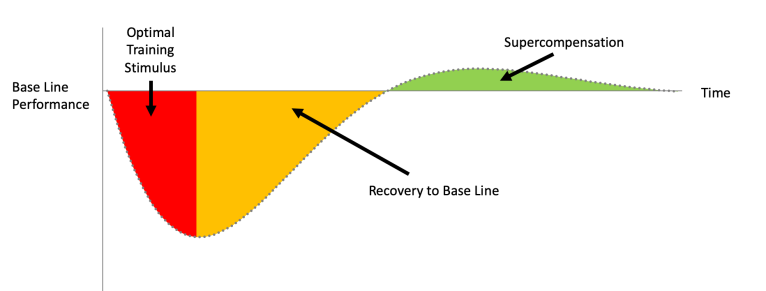The Science (a review)

The General Adaptation Syndrome (GAS), originally proposed by Hans Selye in 1938, has been widely accepted as a theoretical framework for understanding stress and adaptation in the field of sport and exercise science. However, debates among researchers, coaches, and personal trainers have questioned the validity of using GAS as a guide for training periodization.
This article aims to critically examine the argument against GAS and how use of adopted frameworks such as “stress, recovery, and adaptation” are just reskinned versions of GAS.
What is General Adaptation Syndrome (GAS)?

Selye’s GAS framework was based on experiments with rats exposed to lethal stressors. It posits that adaptation occurs in three phases: alarm, resistance, and exhaustion. While this framework has been applied to rats, criticism arises from the vast differences between the stressors used in Selye’s experiments and the modern concept of stress. Namely, that the stressors (even those with exercise) are done in a manner that typically resulted in death for the rats. This is a level of exercise that I assure the reader, no one does intentionally.
Does it Inform Programming/Planning?
Periodization, a commonly used approach in training, has traditionally relied on the GAS framework to guide the management of stress and adaptation. However, some researchers argue that GAS does not directly apply to normal resistance training and that its mechanistic explanation for adaptation lacks robust empirical evidence. Instead, they propose a more holistic approach that considers the multifaceted nature of stress and aims to attenuate its impact through periodization.
Relevance in Humans?
Critics of GAS argue that the extrapolation of Selye’s work to exercise and sport science lacks empirical support. Stress, as observed in Selye’s experiments, differs significantly from the complex and individualized nature of stress experienced by humans.
Science Review Conclusion
While GAS has served as a foundational framework for understanding stress and adaptation, its application in training periodization requires critical examination. The significant differences between Selye’s experiments and modern stress, coupled with the lack of empirical support, challenge the notion of using GAS as a mechanistic explanation for adaptation. Instead, a more comprehensive and individualized approach that considers the multifaceted nature of stress may be more appropriate for training programs.
Further research is needed to establish a genuine physiological link between extreme stress interventions and normal resistance training. In the meantime, it is crucial to prioritize stress reduction and performance improvement in periodization strategies rather than solely focusing on adaptation.
My Thoughts in Layman’s Terms
The idea for this blog came from the article I read titled “Progressive Overload PT. 2” . Now, before I go any further this is not a criticism of the overall message made of the author. Rather it’s a criticism of the rationale.
I will never argue that stress management is not beneficial for injury mitigation. However, I will argue that in the context of adaptations or performance, the usage of an approach that considers “training, recovery, and supercompensation” (often referred to as SRA) phases as justification makes no sense. Further, adaptation or performance enhancement occurs despite attention given to these phases not because of it.
A common example I provide individuals to argue against GAS or the SRA frameworks is hypertrophy training.
According to these frameworks after a bout of training, we would see a decrease in hypertrophy before we recover and see a “supercompensation” of hypertrophy. Unfortunately, and I wish this were not the case, we do not observe this response.
So does it matter?
Performance and Hypertrophy
The short answer is NO. The usage of the GAS or SRA frameworks do nothing for performance or adaptation (hypertrophy).
Fatigue
The jury is still out on fatigue mainly because we still do not have a very good understanding of what fatigue actually is. What are we accumulating when we say “fatigue”? We have plenty of ideas but not enough support one way or the other to say with a high level of certainty what it is. We simply know that we do a thing, and this other thing called “fatigue” occurs. The discussion of fatigue is in itself an entire segment worth discussing but I digress.
Injury
I do think having periods of reduced training volume and intensity is beneficial as a way to mitigate some injury risks. Especially during times of high mental and mental stress outside of the gym.
Remember, be respectful but always critical.



